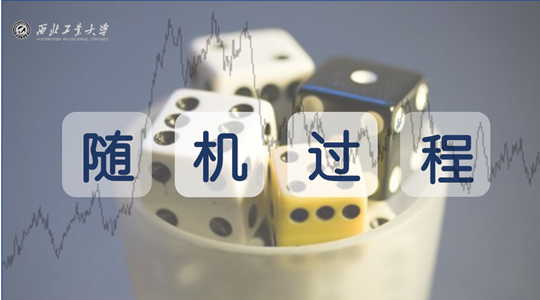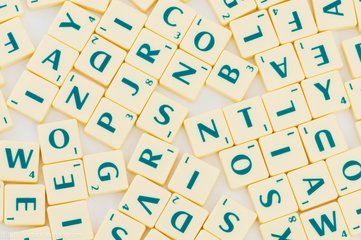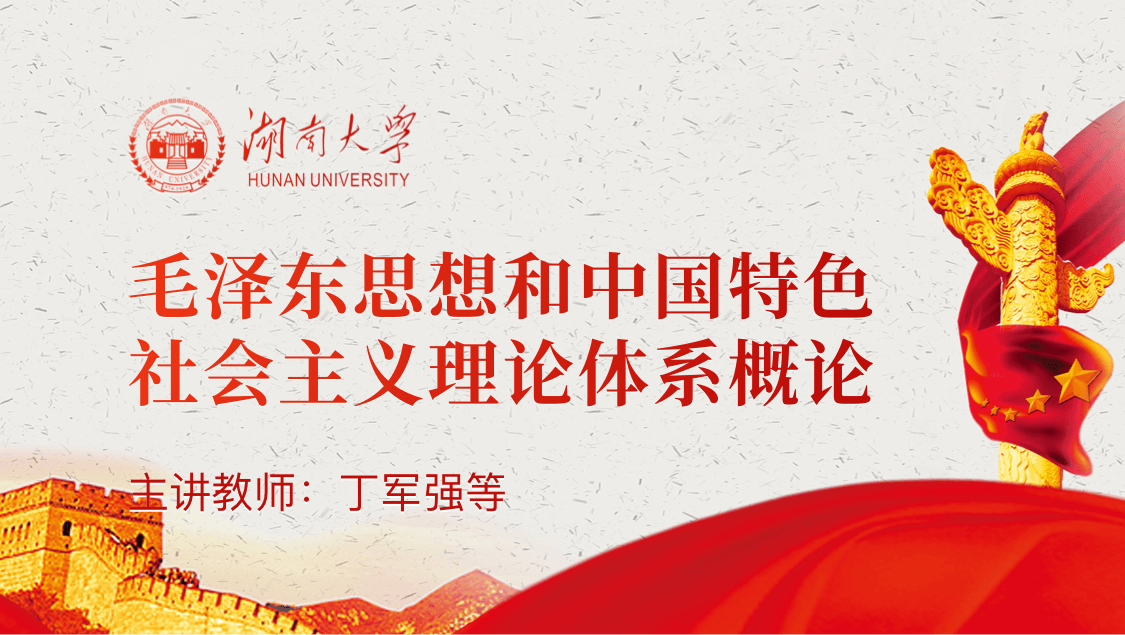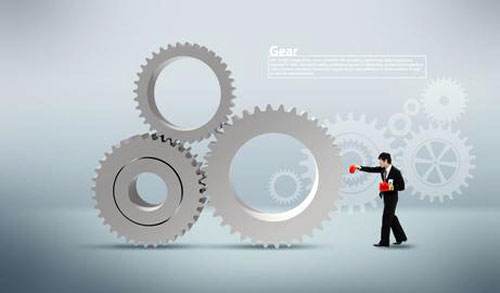
当前课程知识点:History of Western Civilization 全英文西方文明史 > Chapter 7 West in the Seventeenth Century > 7.4 Dutch Golden Age > 7.4.2 Video
返回《History of Western Civilization 全英文西方文明史》慕课在线视频课程列表
7.4 Dutch Golden Age
1. Dutch is a beautiful country famous for its windmills and tulips. Today’s Kingdom of the Netherlands commonly known as the Netherlands is a sovereign state and constitutional monarchy with the large majority of its territory in Western Europe and with several small island territories in the Caribbean Sea. Netherlands means lower countries, referring to its low and flat topography, topography is the physical features of an area. 50% of the land of the Netherlands is only 1 meter above sea level and 17%below sea level.
2. The capital of the Netherlands is Amsterdam; other large cities are Rotterdam, the largest port of Europe, The Hague, home city of the International Court of Justice and the International Criminal Court, and Utrecht, famous for universities.
And this is the capital Amsterdam, and the Hague, and Rotterdam, and Utrecht.
This country is often informally called Holland; actually Holland is a region including two provinces North Holland and South Holland. The Netherlands is located within the region called Low Countries or the Low Lands, historically also the Netherlands. It is a coastal lowland region in northwestern Europe, forming the lower basin of the Rhine, Meuse, and Scheldt rivers, divided in the Middle Ages into numerous semi-independent principalities that consolidated in the countries of Belgium, Luxembourg, and the Netherlands, as well as today's French Flanders.
Dutch people or the Dutch are a Germanic ethnic group native to the Netherlands. They share a common culture and speak the Dutch language.
3. Burgundian Netherland. Most of the Low Countries in what is now the Netherlands and Belgium were united in a personal union by Philip the Good, Duke of Burgundy in 1433. In 1477 the Burgundy was defeated by the Swiss army. The last duke of Burgundy Charles the bold was killed. France annexed most of the land of Burgundy. The only child of Charles the bold Mary the Rich inherited the Low Counties and she married Maximilian of Austrian Habsburgs, the future Holy Roman Emperor.
Spanish Netherland. After Mary and Maximilian the Low Countries was taken by the Spanish Habsburgs. We had talked about Revolt of the Netherlands against Spain from 1568 to 1609. Netherlands was the richest region in Europe, an international leader in manufacturing, banking and commerce. After the Protestant Reformation, Catholics and some protestant denominations peacefully coexisted there. Catholic Spain couldn’t accept the existence of Protestants in their territory.
4. Independent Netherland. After the terrible war in 1609 Spain and Netherlands signed the Twelve Years Truce which tacitly recognized the existence of Dutch Republic or United Provinces in the north of the Netherland. It was the predecessor state of the modern Netherlands and the first nation state of the Dutch people. In 1648 the Peace of Westphalia recognized the independence of the Dutch Republic, Swiss Republic and the Kingdom of Portugal. This new independent country soon became a great power in the 17th century. The Southern Netherlands was still controlled by Spain until it was annexed by France at the end of 18th century, in 1830 it became an independent Kingdom of Belgium.
5. The Dutch Golden Age. The Dutch Golden Age was a period in the history of the Netherlands, roughly spanning the 17th century, in which Dutch trade, science, military, and art were the best in the world. During this time Netherlands became the foremost maritime and economic power in the world. This Dutch Golden Age has been called the "Dutch Miracle" by Dutch-American historian K. W. Swart (1916–1992).
After the war the Dutch Republic welcomed many Protestants migrated from the southern Netherlands, Portugal and France because they were suffered from religious persecution. The Pilgrim Fathers also spent time there before their voyage to the New World. Many of those people were skilled craftsmen and rich merchants and most of them settled in Amsterdam, transforming what was a small port into one of the most important ports and commercial centers in the world by 1630. Due to its climate of intellectual tolerance, the Dutch Republic attracted scientists and other thinkers from all over Europe.
6. Trade
Dutch dominated the international trade in the17th century, a position previously occupied by the Portuguese and Spanish. In 1602, the Dutch East India Company, the first multinational corporation was founded. It soon became the world's largest commercial enterprise. It was financed by shares that established the first modern stock exchange. The Company received a Dutch monopoly on Asian trade, and kept it for two centuries. Spices were imported in bulk and brought huge profits to the country. To finance the growing trade, the Bank of Amsterdam was established in 1609. It is the first central bank in the world.
7. Netherland had the best location for the trade within Europe. Geographically it is on the halfway between the Bay of Biscay and the Baltic Sea (the Bay of Biscay is the sea between France and Spain). This location enables the Netherlands to provide profitable intermediation, carrying salt, wine, cloth and later silver, spices, and colonial products eastward while bringing Baltic grains, fish, and naval stores to the west.
8. Society
In the Dutch Republic the national leader was stadtholder, it was the replacement of the duke or earl of a province during the Burgundian and Habsburg period. Social status was largely determined by income. Bankers and merchants were the backbone of the republic. The landed nobility had relatively little importance; it was the urban merchant class that dominated Dutch society. After bankers, merchants and nobles were the middleclass including Protestant ministers, lawyers, physicians, small merchants, industrialists and clerks of large state institutions. Go under were farmers, craft and tradesmen, shopkeepers, and government bureaucrats. Below that stood skilled laborers, maids, servants, sailors, and other persons employed in the service industry. At the bottom were "paupers": beggar or day laborer.
9. The Anatomy Lesson of Dr. Nicolaes Tulp is a 1632 oil painting commissioned by the Amsterdam Guild of Surgeons, the Guild was permitted one public dissection every year. Anatomy is the study of the structure of the bodies of people or animals, dissection means cutting. Every five to ten years, the Surgeon's Guild would commission a portrait by a leading portraitist of the period. This painting was one of the famous works of Rembrandt. He was only 26 years old then. In the work, official City Anatomist of Amsterdam, Dr. Nicolaes Tulp is explaining the musculature of the arm to medical professionals; musculature is a system of muscles. Some of the spectators are doctors who paid commissions to be included in the painting. The dead body is a criminal convicted for armed robbery, sentenced to death and was hanged early that day. In this painting the artist captured a spirit of civic pride of a relatively open Dutch society. This spirit of civic pride was one of the reasons for the prosperity of the trade, science and culture in the Dutch Republic. The Dutch enjoyed high literacy rates, and Dutch entrepreneurs took advantage of this. In seventeenth century Holland became a great center for the book trade and production of news, Bibles, political pamphlets.
10. Rembrandt.
Rembrandt is generally considered one of the greatest visual artists in the history of art and the most important painter in Dutch art history. His works depict a wide range of style and subject matter, from portraits to landscapes, historical and mythological as well as animal.
11. The Abduction of Europa. Abduction is act of capturing and carrying away by force. The work has been described as "a shining example of the 'golden age' of Baroque painting". Remember in Greek myth Europa was a princess of Phoenicia, One day Zeus changed himself into a white bull, seduced her ride the bull and flew to an island, Crete. The name of Europe came from Europa, at the beginning Europe only means Crete, gradually the whole Greece, after the expansion of the Roman Empire it extended to its modern boundaries.
12. René Descartes (1596–1650) was a French philosopher, mathematician, and scientist. He was born French but spent about 20 years in the Dutch Republic, Once Served in the Dutch States Army. He is generally considered one of the most notable intellectual figures of the Dutch Golden Age. He is often credited with being the “Father of Modern Philosophy.” His philosophy known as Cartesianism rested or the Dual existence of matter and mind. Matter was the material world, Mind was the spirit of the creator. In his work Discourse on method, he argued how skepticism could be used to produce certainty. His best-known philosophical statement is "I think, therefore I am". He was not perfect thus a perfect being had to have place knowledge within him. Therefore, a perfect being-God existed. His greatest contribution is that he proved the new science could be harmonized with the old religion.
13. Key words: the Netherlands, Amsterdam, The Dutch Golden Age, the Dutch East India Company, Rembrandt, Descartes.
This is the end of seven point four.
返回《History of Western Civilization 全英文西方文明史》慕课在线视频列表
Hi This is 7 point 4 Dutch Golden Age
It is a beautiful country
famous for its windmills and tulips
Today’s Kingdom of the Netherlands
commonly known as the Netherland
is a sovereign state
and constitutional monarchy
with the large majority of
its territory in Western Europe
and with several small island territories
in the Caribbean Sea
Netherlands means lower countries
referring to its low and flat topography
Topography is the physical features
of an area
50 percent of the land
of the Netherlands
is only 1 meter above sea level
and 17 percent below sea level
The capital of the Netherlands
is Amsterdam
Other large cities are Rotterdam
the largest port of Europe
The Hague home city
of the International Court of Justice
and the International Criminal Court
and Utrecht famous for universities
And this is the capital Amsterdam
and the Hague and Rotterdam and Utrecht
This country
is often informally called Holland
Actually Holland is a region
including two provinces North Holland
and South Holland
The Netherlands
is located within the region
called Low Countries or the Low Lands
historically also the Netherlands
It is a coastal lowland region
in northwestern Europe
forming the lower basin
of the Rhine Meuse
and Scheldt rivers
Divided in the Middle Ages
into numerous
semi-independent principalities
that consolidated in the countries
of Belgium Luxembourg and the Netherlands
as well as today's French Flanders
Dutch people or the Dutch
are a Germanic ethnic group native
to the Netherland
They share a common culture
and speak the Dutch language
Most of the Low Countries
in what is now the Netherlands
and Belgium were united
in a personal union
by Philip the Good Duke
of Burgundy in 1433
In 1477 the Burgundy
was defeated by the Swiss army
The last duke of Burgundy Charles
the Bold was killed
France annexed most
of the land of Burgundy
The only child of Charles
the Bold Mary the Rich
inherited the Low Counties
and she married Maximilian
of Austrian Habsburg
the future Holy Roman Emperor
Spanish Netherland
After Mary and Maximilian
the Low Countries was taken
by the Spanish Habsburgs
We had talked about Revolt
of the Netherlands
against Spain from 1568 to 1609
Netherlands was the richest region
in Europe
an international leader
in manufacturing
banking and commerce
After the Protestant Reformation
Catholics
and some protestant denominations
peacefully coexisted there
Catholic Spain couldn’t accept
the existence of Protestants
in their territory
After the terrible war
in 1609 Spain and Netherlands
signed the Twelve Years Truce
which tacitly recognized the existence
of Dutch Republic or United Provinces
in the north of the Netherland
It was the predecessor state
of the modern Netherlands
and the first nation state
of the Dutch people
In 1648 the Peace
of Westphalia recognized
the independence
of the Dutch Republic Swiss Republic
and the Kingdom of Portugal
This new independent country soon
became a great power in the 17th century
The Southern Netherlands still controlled
by Spain until it was annexed by France
at the end of 18th century
In 1830 it became
an independent Kingdom of Belgium
The Dutch Golden Age
The Dutch Golden Age was a period
in the history of the Netherlands
roughly spanning the 17th century
in which Dutch trade science military
and art
were the best in the world
During this time Netherlands
became the foremost maritime
and economic power in the world
This Dutch Golden Age
has been called the Dutch Miracle
by Dutch-American historian K W Swart
After the war the Dutch Republic
welcomed many Protestants
migrated from the southern Netherlands
Portugal and France
because they were suffered
from religious persecution
The Pilgrim Fathers
also spent time there
before their voyage to the New World
Many of those people
were skilled craftsmen
and rich merchants
and most of them settled in Amsterdam
transforming what was a small port
into one of the most important ports
and commercial centers
in the world by 1630
Due to its climate
of intellectual tolerance
the Dutch Republic attracted scientists
and other thinkers from all over Europe
Dutch dominated the international trade
in the17th century
a position previously occupied
by the Portuguese and Spanish
In 1602 the Dutch East India Company
the first multinational corporation
was founded
It soon became
the world's largest commercial enterprise
It was financed by shares
that established
the first modern stock exchange
The Company received a Dutch monopoly
on Asian trade
and kept it for two centuries
Spices were imported in bulk
and brought huge profits to the country
To finance the growing trade
the Bank of Amsterdam
was established in 1609
the first central bank in the world
Netherland had the best location
for the trade within Europe
Geographically it is on the halfway
between the Bay
of Biscay and the Baltic Sea
The Bay of Biscay
is the sea between France and Spain
This location enables the Netherlands
to provide profitable intermediation
carrying salt wine cloth
and later silver
spices and colonial products eastward
while bringing Baltic grains fish
and naval stores to the west
Society
In the Dutch Republic
the national leader was stadtholder
It was the replacement
of the duke or earl of a province
during the Burgundian
and Habsburg period
Social status was largely determined
by income
Bankers and merchants
were the backbone of the republic
The landed nobility
had relatively little importance
It was the urban merchant class
that dominated Dutch society
After bankers merchants and nobles
were the middle class
including Protestant ministers
lawyers physicians
small merchant industrialists
and clerks of large state institution
Go under were farmers craft
and tradesmen
Shopkeepers and government bureaucrats
Below
that stood skilled laborer maid servants
sailors and persons employed
in the service industry
At the bottom were paupers beggar
or day laborer
The Anatomy Lesson of Dr Nicolaes Tulp
is a 1632 oil painting commissioned
by the Amsterdam Guild of Surgeons
the Guild was permitted
one public dissection every year
Anatomy is the study
of the structure of the bodies
of people or animals
dissection means cutting
Every five to ten years
the Surgeon's Guild
would commission a portrait
by a leading portraitist of the period
This painting was one
of the famous works of Rembrandt
He was only 26 years old then
In the work official city Anatomist
of Amsterdam
Dr Nicolaes Tulp
is explaining the musculature of the arm
to medical professionals
Musculature is a system of muscles
Some of the spectators are doctors
who paid commissions
to be included in the painting
The dead body is a criminal
convicted for armed robbery
sentenced to death
was hanged early that day
In this painting the artist captured
a spirit of civic pride
of a relatively open Dutch society
This spirit of civic pride
was one of the reasons
for the prosperity
of the trade science
and culture in the Dutch Republic
The Dutch enjoyed high literacy rates
and Dutch entrepreneurs took advantage
of this
In seventeenth century
Holland became a great center
for the book trade
and production
of news Bibles political pamphlets
Rembrandt is generally considered
one of the greatest visual artists
in the history of art
and the most important painter
in Dutch art history
His works depict a wide range of style
and subject matter
from portraits to landscapes
historical
and mythological as well as animal
The Abduction of Europa
Abduction is act
of capturing and carrying away by force
The work has been described
as a shining example
of the golden age of Baroque painting
Remember in Greek myth
Europa was a princess of Phoenicia
One day Zeus changed himself
into a white bull
seduced her ride the bull
and flew to an island Crete
The name of Europe came from Europa
At the beginning Europe
only means Crete
Gradually the whole Greece
After the expansion of the Roman Empire
it extended to its modern boundaries
Rene Descartes was a French philosopher
mathematician and scientist
He was born French
but spent about 20 years
in the Republic
Once Served in the Dutch States Army
He is generally considered one
of the most notable intellectual figures
of the Dutch Golden Age
He is often credited
with being the Father
of Modern Philosophy
His philosophy known
as Cartesianism rested
or the Dual existence of matter and mind
Matter was the material world
Mind was the spirit of the creator
In his work Discourse on method
he argued how skepticism
could be used to produce certainty
His best known philosophical statement is
I think therefore I am
He was not perfect thus a perfect being
had to have place knowledge within him
Therefore a perfect being God existed
His greatest contribution is that
he proved the new science
could be harmonized
with the old religion
Let’s look at the Key word
the Netherlands
Amsterdam
The Dutch Golden Age
the Dutch East India Company
Rembrandt
Descartes
This is the end of 7 point 4
-1.0 Introduction
--1.0.3 Exercises
-1.1 Greek Bronze Age and Dark Age
--1.1.3 Exercises
-1.2 Greek Gods
--1.2.3 Exercises
-1.3 Archaic Greece
--1.3.3 Exercises
-1.4 Athens and the Persian Wars
--1.4.3 Exercises
-1.5 Discussion
-2.1 War and politics in the fifth century BC
--2.1.3 Exercises
-2.2 Greece in the fourth century BC
--2.2.3 Exercises
-2.3 Classical Greek Philosophy
--2.3.3 Exercises
-2.4 Athenian Drama
--2.4.3 Exercises
-2.5 Alexander the Great and Hellenistic World
--2.5.3 Exercises
-2.6 Discussion
-3.1 Roman Kingdom
--3.1.3 Exercises
-3.2 Early Republic
--3.2.3 Exercises
-3.3 Mid-Republic
--3.3.3 Exercises
-3.4 Late-Republic
--3.4.3 Exercises
-3.5 End of the Republic
--3.5.3 Exercises
-3.6 Discussion
-4.1 Pax Romana 1
--4.1.3 Excecises
-4.2 Pax Romana 2
--4.2.3 Excecises
-4.3 Crisis of the Third Century and Constantine
--4.3.3 Excecises
-4.4 The Victory of Christianity
--4.4.3 Exercises
-4.5 The Fall of the Roman Empire
--4.5.3 Exercises
-4.6 Discussion
-5.1 Early Middle Ages
--5.1.3 Excecises
-5.2 Carolingian Dynasty
--5.2.3 Excecises
-5.3 High Middle Ages
--5.3.3 Excecises
-5.4 Late Middle Ages 1
--5.4.1 Excecises
-5.5 Late Middle Ages 2
--5.5.3 Excecises
-5.6 Discussion
-6.1 The Renaissance
--6.1.3 Exercises
-6.2 Protestant Reformation
--6.2.3 Exercises
-6.3 Italian Wars and Rise of Russia
--6.3.3 Exercises
-6.4 Age of Discovery
--6.4.3 Exercises
-6.5 French War of Religion and Russia’s Time of Trouble
--6.5.3 Exercises
-6.6 Discussion
-7.1 The Thirty Years War
--7.1.3 Exercises
-7.2 English Revolution
--7.2.3 Exercises
-7.3 Three Absolute Monarchs
--7.3.3 Exercises
-7.4 Dutch Golden Age
--7.4.3 Exercises
-7.5 Science and Culture in the 17th Century
--7.5 Text
--7.5.3 Exercises
-7.6 Discussion
-8.1 The United Kingdom
--8.1.3 Exercises
-8.2 The American Revolution
--8.2.3 Exercises
-8.3 The French Revolution
--8.3.3 Exercises
-8.4 Age of Enlightenment
--8.4.3 Exercises
-8.5 West after the 18th century
--8.5.3 Exercises
-8.6 Discussion




